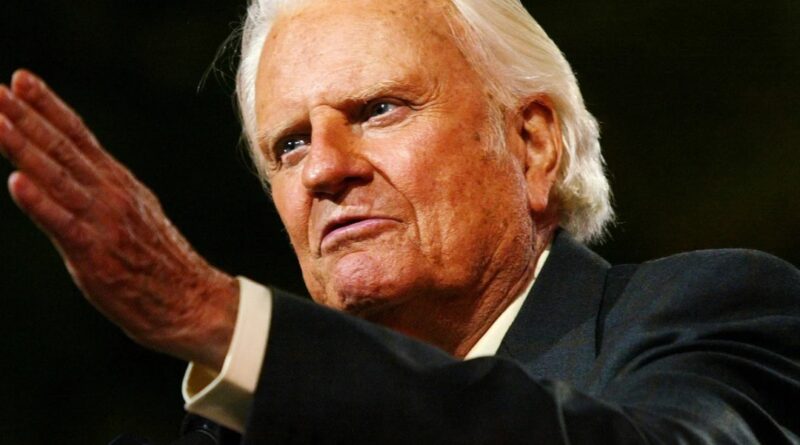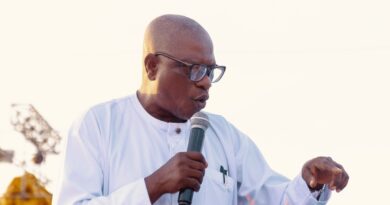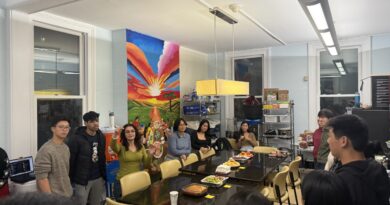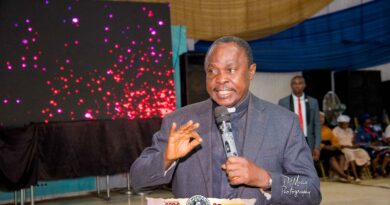TODAY IN HISTORY: The Billy Graham 1949 Los Angeles Revival
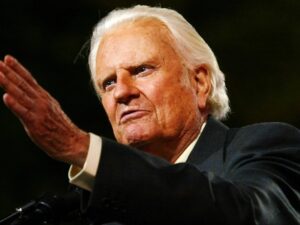 TODAY IN HISTORY: The Billy Graham 1949 Los Angeles Revival
TODAY IN HISTORY: The Billy Graham 1949 Los Angeles Revival
15th October 1949: Billy Graham holds his first great evangelistic campaign in Los Angeles, USA. During the campaign, he preached to more than 350,000 people, and over 3,000 of them gave their lives to Christ.
In the fall of 1949, a young preacher named Billy Graham stepped into a tent in Los Angeles, unaware that history was about to change. What started as a modest city revival soon became a spiritual earthquake that reshaped the landscape of modern evangelism.
At just 30, Graham had preached for Youth for Christ and pastored small churches, but few knew his name beyond evangelical circles. That changed when a committee called Christ for Greater Los Angeles invited him to lead a three-week evangelistic campaign starting September 25, 1949.
ALSO READ :Anglican Church Denies Ojudu’s Claim of Fundraising at Ekiti Burial
A massive tent rose at the corner of Washington Boulevard and Hill Street, seating about 6,000 people. It was quickly dubbed the Canvas Cathedral. Attendance began small, but the tide soon turned.
Everything changed when Stuart Hamblen, a well-known radio personality, publicly shared his conversion after one of the meetings. His story spread like wildfire. Then came a defining twist when newspaper tycoon William Randolph Hearst sent his famous two-word telegram to editors saying, “Puff Graham.”
The national press seized the story. Headlines praised the young preacher whose words stirred Los Angeles. Crowds multiplied overnight. The tent expanded, yet thousands still stood outside, eager to listen.
The revival stretched far beyond its schedule, from three weeks to eight, ending on November 20, 1949. By then, over 350,000 people had attended, and nearly 3,000 souls had made public commitments to Christ.
Among them were Louis Zamperini, the World War II hero and Olympian, and Jim Vaus, a Hollywood wiretapper whose conversion shocked the underworld. Their stories added more fire to the revival’s momentum.
The Los Angeles Crusade of 1949 became the turning point in Billy Graham’s life and ministry. It marked the rise of large-scale crusades that would take him to every continent, reaching millions with the gospel.
Historians call it a watershed moment where prayer, faith, and media converged to awaken a generation.
Years later, Graham reflected on that season and said, “It was the moment when I knew God had set me apart for something greater than I could ever imagine.”
15th October 1949: Billy Graham holds his first great evangelistic campaign in Los Angeles, USA. During the campaign, he preached to more than 350,000 people, and over 3,000 of them gave their lives to Christ.
In the fall of 1949, a young preacher named Billy Graham stepped into a tent in Los Angeles, unaware that history was about to change. What started as a modest city revival soon became a spiritual earthquake that reshaped the landscape of modern evangelism.
At just 30, Graham had preached for Youth for Christ and pastored small churches, but few knew his name beyond evangelical circles. That changed when a committee called Christ for Greater Los Angeles invited him to lead a three-week evangelistic campaign starting September 25, 1949.
A massive tent rose at the corner of Washington Boulevard and Hill Street, seating about 6,000 people. It was quickly dubbed the Canvas Cathedral. Attendance began small, but the tide soon turned.
Everything changed when Stuart Hamblen, a well-known radio personality, publicly shared his conversion after one of the meetings. His story spread like wildfire. Then came a defining twist when newspaper tycoon William Randolph Hearst sent his famous two-word telegram to editors saying, “Puff Graham.”
The national press seized the story. Headlines praised the young preacher whose words stirred Los Angeles. Crowds multiplied overnight. The tent expanded, yet thousands still stood outside, eager to listen.
The revival stretched far beyond its schedule, from three weeks to eight, ending on November 20, 1949. By then, over 350,000 people had attended, and nearly 3,000 souls had made public commitments to Christ.
Among them were Louis Zamperini, the World War II hero and Olympian, and Jim Vaus, a Hollywood wiretapper whose conversion shocked the underworld. Their stories added more fire to the revival’s momentum.
The Los Angeles Crusade of 1949 became the turning point in Billy Graham’s life and ministry. It marked the rise of large-scale crusades that would take him to every continent, reaching millions with the gospel.
Historians call it a watershed moment where prayer, faith, and media converged to awaken a generation.
Years later, Graham reflected on that season and said, “It was the moment when I knew God had set me apart for something greater than I could ever imagine.”
Content Credit : Boluwatife Abiola
Image Credit : google.com

